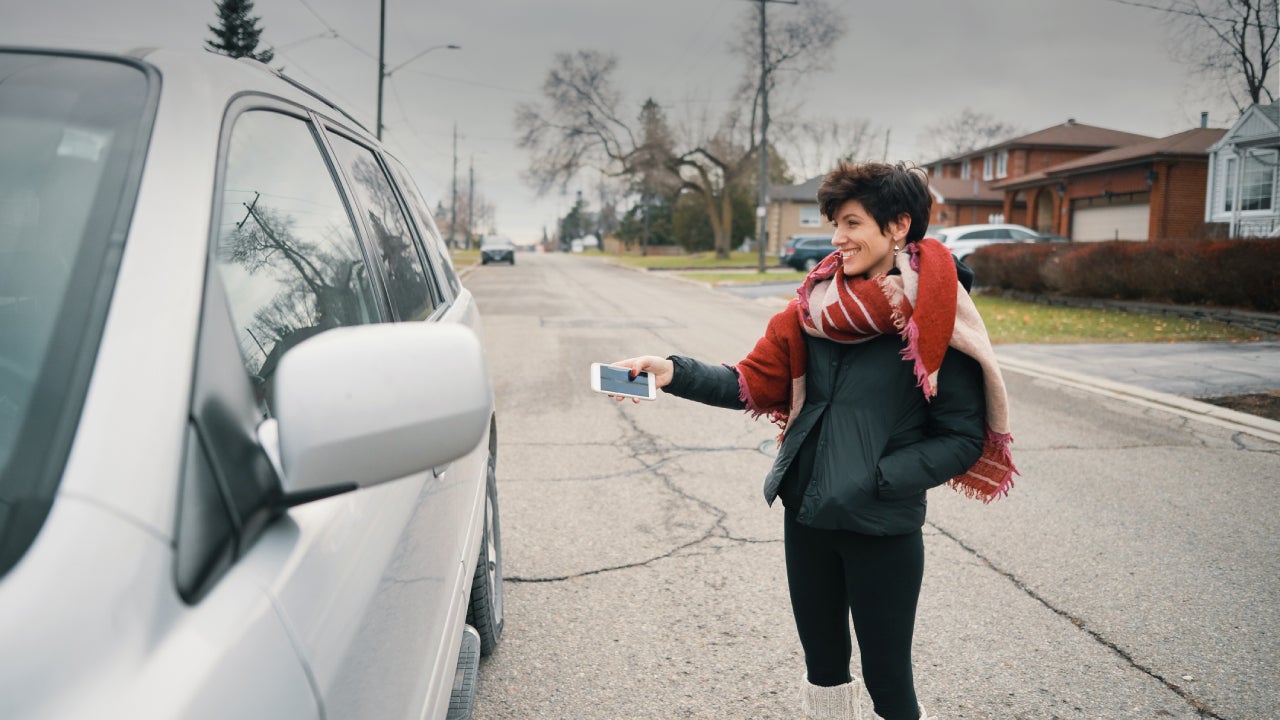Liability car insurance: What it covers and how much it costs




Key takeaways
- Liability coverage helps pay for another driver’s vehicle repairs and medical expenses if you cause an accident.
- It won’t cover injuries you sustain or damage to your vehicle.
- This type of insurance is required by law in most states.
Car insurance is not just a good idea, it’s required by law in all states except New Hampshire. While states set their own mandates, you’re typically required to have liability-only coverage as a bare minimum. Liability car insurance is especially critical in at-fault, or tort, states. In these areas, the person who causes the accident is responsible for all related expenses for everyone involved. Understanding liability insurance for your car can help you decide how much coverage you want, need and can afford.
What is liability insurance?
Liability insurance, sometimes referred to as minimum coverage, is a type of insurance that helps pay for other drivers’ vehicle damage and medical care. For instance, if you rear-end another car, your liability coverage is what would kick in to cover damages, up to your policy limits.
However, liability insurance does not cover you if you hit someone or something. Damage to your vehicle and injuries you or your passengers sustain in an accident you cause are only covered if you have collision coverage on your policy. If you have liability-only auto insurance, you will need to pay out of pocket to fix your own car or pay resulting medical bills.
How liability insurance works
Liability includes two main components: bodily injury liability and property damage liability.
- Bodily injury liability helps cover medical bills, lost earnings and legal costs if you’re sued because of an accident.
- Property damage liability helps cover costs to repair or replace another person’s property, such as a vehicle or a fence, damaged in an accident you cause. It can even cover the other person’s personal property inside the vehicle.
Your liability coverage limits are the maximum amount your insurance company will pay per person or accident and are decided when you purchase your policy. If the accident expenses exceed these limits, you may need to pay any extra costs out of pocket. Factors such as state minimum requirements, coverage availability and your budget can influence your policy limits. Note that purchasing only the state minimum required liability coverage could leave you financially vulnerable in an at-fault accident.
What does liability car insurance cover?
Auto liability insurance covers medical expenses and property damage you cause to others in a car accident, which is why it’s required in nearly every state and Washington, D.C. It helps financially protect the at-fault driver from major out-of-pocket costs and ensures the not-at-fault party can receive compensation for injuries or damage caused by the crash.
What does bodily injury liability cover?
Bodily injury liability insurance covers a wide array of medical expenses and other financial strains for those injured in an accident where you are at fault. This includes costs associated with the following:
- Emergency medical attention and ambulance
- Hospital charges
- Continued care expenses and necessary medical equipment
- Lost wages
- Pain and suffering
- Funeral expenses
- Legal costs
What does property damage liability insurance cover?
Property damage liability insurance covers the costs of repairing or replacing another person’s property damaged in an accident where you were at fault. This may include the following:
- Damage to the other party’s vehicle
- Rental car for the other driver
- Personal property inside the other party’s vehicle, such as groceries or sports equipment
- Property damage to buildings, fences, trees and more
Examples where liability insurance coverage applies
There are a variety of scenarios where your liability insurance kicks in. This includes accidents involving other drivers, inanimate objects and pedestrians.
Example 1: You slide on a patch of ice and hit the car in front of you at a stop light. You exchange information with the other driver and are deemed responsible for the crash. It costs $5,000 to repair the other driver’s vehicle and $6,000 to fix your own vehicle. Your liability insurance would cover the $5,000 of expenses claimed by the other driver. You’d be responsible for the $6,000 to repair your own car unless your policy includes collision coverage, which — along with comprehensive — is typically part of a full coverage policy.
Example 2: You are waiting to make a right turn on a busy street. As you turn your head to the left, a pedestrian approaches from the left and you roll into them. Your bodily injury coverage would help pay for their medical expenses and lost wages. If the pedestrian is on a bike or skateboard, your insurance could also help pay to replace their lost equipment.
What doesn’t liability insurance cover?
While liability insurance covers most costs related to your liability in an accident, first-party losses are not covered. First-party losses are those related to you and your passengers. For example, liability insurance usually will not cover:
- Vehicles on your policy
- Medical payments for you or your passengers
- Damage caused by intentional acts
To have costs covered for your vehicle or medical payments for you or your passengers, you’d need to rely on optional insurance coverages, like comprehensive and collision insurance, for your vehicle repair costs. Typically, personal injury protection or medical payments coverage step in to help cover your medical bills and those of people in your vehicle.
Supplemental spousal liability (SSL) is the exception to the rule regarding liability coverage potentially applying to a passenger in the at-fault driver’s vehicle. New York car insurance laws recently required all insurers to include SSL coverage on all private passenger auto policies. SSL can pay for medical payments to the spouse if they are injured in a car accident where their partner was the at-fault driver. For example, this coverage could be helpful if the driver hits a patch of black ice and their spouse is severely injured. Once the personal injury protection (PIP) on the policy is exhausted, the spouse could file a claim under SSL to pay for any covered medical overages. Policyholders can choose to waive the coverage in writing.
How much does liability insurance cost?
As of July 2025, the average cost of car insurance in the United States is $807 per year ($67 per month) for minimum coverage, while full coverage costs an average of $2,677 per year ($223 per month). While liability insurance for your car makes up a portion of those premiums, your total car insurance costs will vary depending on your liability limits and other coverage types on your policy.
In addition to the state you live in, insurance companies consider several factors when determining your insurance premiums, including:
- Your age (in most states)
- The type of car you drive and how many miles you log per year
- Your motor vehicle record
- Your ZIP code (in most states)
- Your credit-based insurance score (in most states)
- Coverage types and limits you choose to purchase
Most companies offer a range of policy limits and add-on coverage options. While choosing higher limits and adding other coverage types will provide you with more coverage in the case of an at-fault accident, they’ll increase your monthly insurance bill. On the other hand, liability-only car insurance usually comes with pretty low premiums to compensate for the fact that you agree to cover damages in various scenarios out of pocket.
How to calculate the amount of liability insurance you need
Everyone has different insurance needs, but some general guidelines can help you determine how much coverage you may need.
Understand your state’s insurance laws
The minimum coverage needed to put your car on the road depends on your state and whether it is a no-fault or tort state (states that hold drivers responsible for damage and injuries caused to others). In a no-fault state, a driver may also be required to carry personal injury protection (PIP) insurance in addition to liability, property damage and bodily injury coverage.
Uninsured and underinsured motorist coverage may also be required, and MedPay is required in some states.
In most places, you will need to purchase at least your state’s minimum-required liability limits to drive legally; required limits vary by state. Knowing your state’s minimum liability limits is useful when looking at coverage and policies. Still, insurance companies cannot offer you an insurance policy that falls short of the legal limits, so you don’t need to memorize this information.
When viewing required liability coverage types, you will see three numbers separated by a forward slash.
- The first number is the minimum bodily injury liability required per person in thousands
- The second number is the minimum bodily injury liability required per accident in thousands
- The third number is the minimum property damage liability required in thousands
So when you see 25/50/25 for Alabama, that means if you live in Alabama, you must carry at least $25,000 of bodily injury liability per person, $50,000 of bodily injury liability per accident and $25,000 of property damage liability.
Remember, these figures are just what’s required at a minimum. Most insurance professionals recommend that you carry higher liability limits if you can afford to do so to access greater financial protection in case of an at-fault accident.
Think about your financial situation
With car insurance rates increasing rapidly over the past few years, it has been challenging for many policyholders to keep up with their insurance payments. While forgoing auto insurance may seem like a quick fix to a tight budget, maintaining continuous coverage can save you from greater financial strain.
For instance, if you crash your car into someone else’s property and are sued for the damage, the costs you pay in this scenario are likely much higher than what you would have paid to have car insurance coverage. Not having auto insurance could also open you to state penalties and the risk of driver’s license and vehicle registration suspension.
Canceling your insurance or a lapse in coverage could also make you a high-risk customer and result in more expensive premiums later. Therefore, instead of forgoing insurance, look for an affordable insurer and available discounts to keep your costs low.
Consider your net worth
How much liability insurance you need will also depend on your net worth. If you have significant assets — such as a house, car or sizable savings account — you may want to purchase more liability insurance to cover your net worth and prevent assets from being taken in a judgment. You may even consider an umbrella insurance policy to provide extra liability coverage above typical standard car insurance policy limits.
It’s generally thought that you’ll want liability insurance that at least covers your net worth; however, consulting a licensed insurance professional is always a good way to determine how much coverage you need.
Best providers for liability insurance
Because everyone has different insurance needs, the best car insurance company will vary for every driver. The following big-name companies (chosen due to their market share) illustrate how widely premiums can vary depending on the company you choose.
| Car insurance company | Average annual premium for minimum coverage (to meet state liability requirements) |
|---|---|
| Auto-Owners | $490 |
| Geico | $586 |
| Progressive | $724 |
| Travelers | $739 |
| USAA | $598 |
Drivers looking to save money on car insurance may want to check with their agent about discount opportunities and other ways to reduce their premiums. Carriers offer a wide range of discounts, and by getting quotes from multiple providers, you may find one with discounts geared toward your driving profile. Typical discounts include price cuts for being a safe driver, bundling your auto and home insurance, being associated with a particular insurer or having a low annual mileage.
What is the difference between liability insurance and other types of car insurance coverage?
Liability insurance helps pay for damages other drivers incur in an accident you cause. To financially protect yourself from a broader range of scenarios, you may want to consider purchasing the following types of insurance coverage, as well:
- Comprehensive coverage: This helps pay for damage to your own vehicle caused by non-collision events like severe weather, fire, theft, vandalism or striking an animal. For instance, you may be reimbursed if a hail storm cracks your windshield or you hit a deer.
- Collision coverage: This helps pay for damage to your vehicle caused by collisions with other vehicles or objects and applies to at-fault accidents. If you hydroplane off the road and hit a stationary object like a fence, this type of coverage would apply. It can also cover rollover accidents and pothole damage.
- Uninsured/underinsured motorists coverage: This type of coverage helps pay for injuries caused by a motorist with little to no insurance coverage and may help in the case of a hit-and-run. For example, if someone rear ends you but exchanges false insurance information, your uninsured/underinsured motorist coverage could help cover repairs to your vehicle. In some states, this coverage is mandatory. In other states, the law may require it to be offered, but policyholders can opt out. Still, other states make it available as an optional purchase.
- Roadside assistance coverage: If you find yourself on the side of the road with a flat tire, empty fuel tank or dead battery, this coverage helps pay to send help or tow your vehicle. Some insurers will specify how many miles of tow truck coverage you’ll get or how many gallons of fuel someone will deliver. Roadside assistance can also help if you lock your keys in your car.
- Rental car coverage: This helps cover expenses for a rental vehicle while your car is in the shop for repairs after a covered incident. It may come with limits, such as $30 a day and/or up to 30 days.
- Gap insurance: If you’re financing your car and get into an accident that totals the vehicle (or it’s stolen), you’re still responsible for paying off your loan. Fortunately, gap insurance is there to help. For instance, if you owe $8,000 on your car loan but your insurance provider only pays out $5,000 after a covered claim (due to depreciation), gap insurance could help pay the remaining $3,000 you owe on the car.
- Personal injury protection: PIP insurance may provide coverage if you or your passengers are injured in a car accident, regardless of who is at fault. PIP is usually required coverage in no-fault states, but in some states, it might be optional or not available at all.
There are numerous car insurance coverage options, and each insurance company offers its own suite of available coverage. Talking to a licensed insurance agent about your policy may be the best way to determine what coverage options you should purchase.
Frequently asked questions
Methodology
Bankrate utilizes Quadrant Information Services to analyze July 2025 rates for all ZIP codes and carriers in all 50 states and Washington, D.C. Rates are weighted based on the population density in each geographic region. Quoted rates are based on a single, 40-year-old male and female driver with a clean driving record, good credit and the following full coverage limits:
- $100,000 bodily injury liability per person
- $300,000 bodily injury liability per accident
- $50,000 property damage liability per accident
- $100,000 uninsured motorist bodily injury per person
- $300,000 uninsured motorist bodily injury per accident
- $500 collision deductible
- $500 comprehensive deductible
To determine minimum coverage limits, Bankrate used minimum coverage that meets each state’s requirements. Our base profile drivers own a 2023 Toyota Camry, commute five days a week and drive 12,000 miles annually. Bundling and paperless billing discounts are applied.
These are sample rates and should only be used for comparative purposes. Your quotes will differ.
If otherwise specified, the base profile has been modified with the following driver characteristics:
Why we ask for feedback Your feedback helps us improve our content and services. It takes less than a minute to complete.
Your responses are anonymous and will only be used for improving our website.
You may also like

Car insurance for smart cars: Average premiums by model


What is car insurance and how does it work?

